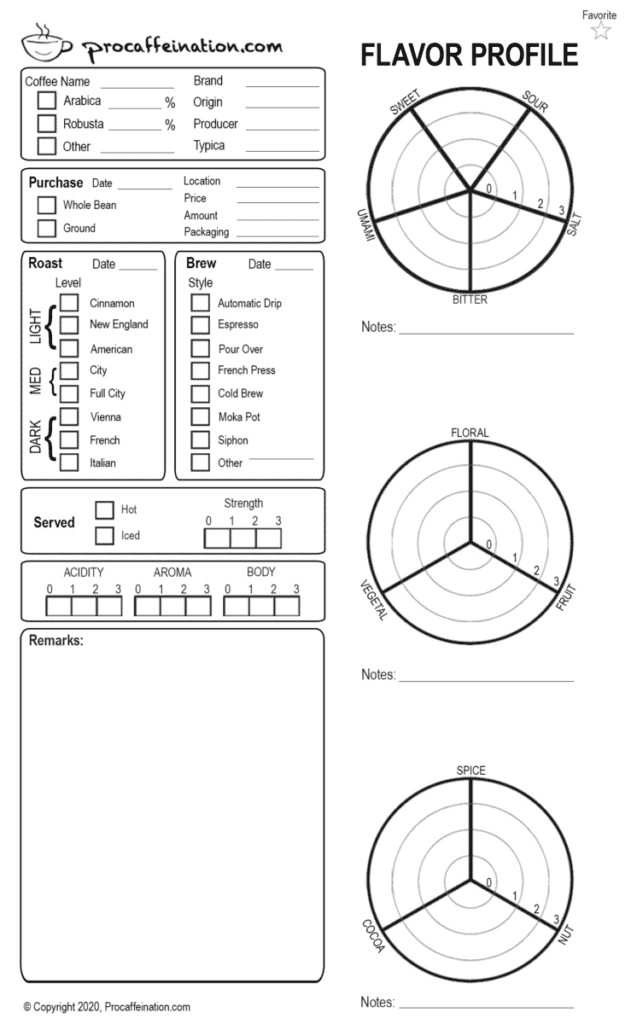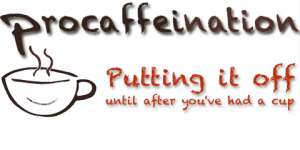Spoiler Alert: Maybe Rating Coffee Isn’t for You
I’ll admit, rating coffee might not be your thing. In my experience, there are different kinds of “coffee people.” I mean, some like it hot. Some like it cold. Some like it in the pot, one day old.
Humor (or humour, if you prefer) aside, some coffee drinkers have sophisticated palates that would make a Q-grader envious; they are already probably rating coffee. Some can taste the difference between varieties of coffee and growing regions. Others have specific favorites. Some coffee drinkers are just in it for the buzz of that fourth cup at the office. Some coffee drinkers think of it as “go fuel” and couldn’t care less about the quality or rating coffee in any way other than, “Is it hot?” In fact, I think it is probably more of a spectrum.
My personal coffee journey has led me along that spectrum: From high school and college, where it was more of a substitute for sleep, to purchasing a decent coffee maker, to grinding my own beans, to moving to Hawaii to farm Kona coffee, to learning about brewing techniques and the chemistry involved, to buying a Nespresso machine, and finally, to writing about coffee for literally dozens of people (I wanted to insert a laughing emoji here). How are y’all doing?
If you are reading a blog about coffee, I am going to assume that you have at least progressed to the “Caring About Quality” stage of coffee obsession. Taking the time to quantify your coffee drinking experience can help move you along the spectrum and increase your enjoyment of our favorite elixir.
A couple of years ago, during the COVID lockdown, I created this form for tasting and rating coffee, which I then dolled up and turned into a tasting journal you can purchase on a popular online retailer:

Evaluating Coffee Quality Quantitatively
Some qualities of coffee are easy to quantify: The Name, The Brand, etc. Basically all the items in the first few boxes:

For instance, my current choice in daily coffee is a 100% Arabica from the Malabar coast in southwest India. In the first box, I give the name as “Malabar,” check the Arabica box, and mark it as 100%. The origin is “India,” and that is the extent of the information I have on this coffee. I do know that it is “monsooned,” but I will put that in the “Remarks” section.
In the second box, I know when I purchased it (last Thursday), at the market in Maurs (from the roaster I frequent, Cafeterie-Guillaume.com), I paid 14.50 for 500g of whole bean, and it was handed to me in a lined paper sack.
In the third box, I note that Guillaume roasted the coffee at “City” the week before, and in the fourth, that I prepared it as a “Pour Over” this morning.
Qualities That Count
This section is where your opinions make an appearance:

Hot or Iced is a binary choice, but “Strength” is where you can start to discriminate. Did the café skimp on the beans? Acidity is usually based on a “brightness” on the tongue, but for some it is more of a stomach thing. Aroma can be based on the smell of the unbrewed coffee or the brewed – it’s your choice! I think of “Body” as a “mouthfeel” thing. But you do you.
In the remarks, I put whatever notes or subjective impressions I might have, such as “86 turns of the grinder at setting 12,” or pairs well with a croissant. This is a great place to put notes that are meaningful to you in selecting your next coffee.
Quantifying the Qualities of Taste
Column two is where you really get to give your taste buds a workout.

First off, there is that little “star” up there in the corner. Use that to mark coffees that you are interested in trying again.
The first target area is your opportunity to evaluate the coffee based on the five basic tastes of the tongue: sweet, sour, salt, bitter, and umami (savory). I take a drink of my beverage and try to pick out the tastes one by one. It takes a little time, but with practice, it gets easier. There is also a spot for any notes that help to clarify your position.

After swallowing, I take another mouthful and try to isolate the plant-like characteristics. In the notes, I will usually mention whatever impressions I might have about those flavors, such as which fruits I taste or what flower-like flavors I sense. I recommend the Specialty Coffee Association’s Flavor Wheel to help you think about flavors. There is a copy on the back cover of The Coffee Lover’s Guide and Journal.
https://sca.coffee/sca-news/how-to-use-the-flavor-wheel-in-eight-steps

The third block covers the “darker” flavors, such as cocoa, spices, and nuts. If I were drinking something that had a particularly strong robusta in it (not often!), I might note rubbery, chemical flavors, as well.

So, Should I rate my coffee?
And that about covers the nuts and bolts of “How to taste coffees,” but I never really addressed the “Why” – the “Why you should” and the “Why you shouldn’t bother.” To answer these questions, I think we have to go back to the spectrum analogy.
Why You Shouldn’t Bother Evaluating Your Coffee
If you are on the end of the spectrum that is focused on the “Quantities” – How much coffee can I drink to make up for lost sleep? How little can I pay for my coffee? How fancy do I look sitting in this expensive café? Which coffee are the important people talking about? – then you shouldn’t bother. I mean, learning how to appreciate things can bring more joy into your life but it doesn’t really sound like that is what is important to you. But you might want to think about it. Appreciation and gratitude will markedly improve your life.
Why You Should Make an Effort to Evaluate Your Coffee
The farther along the spectrum you are towards becoming an amateur Q-grader, the more you will benefit from taking the time to truly get to know coffee and your taste buds. In fact, the act of evaluating and appreciating coffee will pull you farther along the spectrum. If you can taste differences in coffee, you will naturally seek out coffees that have the flavors and characteristics that you most like. This can only improve your morning routine.
And you may find out that as you educate your palate in the ways of coffee, evaluating other foods and beverages becomes natural to you, as well. I love tasting wines and other new flavors. The ability to appreciate things allows you to be grateful for their inclusion in your life.
And gratitude is one of the key components to a life well-lived.

